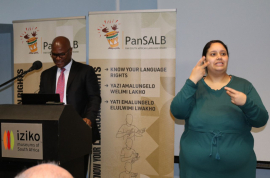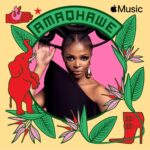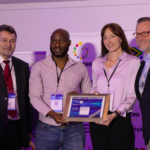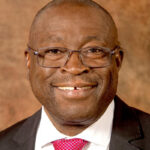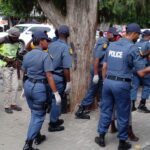As part of efforts to remove barriers that prevent persons in the deaf community from communicating effectively, the country has developed the first bilingual South African Sign Language (SASL) Dictionary.
The dictionary is available as an app on smartphones to provide standardised SASL lexical terminology.
“This effort will close[ the] communication gap drastically, which affect many facets of a deaf person’s life, including education, limited ability to be understood by most of the South African population,” Minister of Sport, Arts and Culture Nathi Mthethwa said on Thursday.
Addressing the launch of Deaf Awareness Month and the first bilingual SASL dictionary in Cape Town, the Minister said the dictionary would further enhance curriculum for learning South African Sign Language, strengthen cognitive function and communication skills.
As part of continued efforts to develop SASL, the Pan South African Language Board (PANSALB) has been working closely with the National Institute for the Deaf (NID) to standardise and authenticate the bilingual SASL Dictionary.
The NID is a registered non-profit organisation that has conducted extensive research in South African Sign Language and develops content targeted at not only the deaf community, but also the hearing as well to bridge the communication gap that currently exists between the two.
The bilingual SASL Dictionary that has been developed by the NID has over 3 000 signs and 2 500 English words, which will facilitate teaching and learning between the two languages.
“This launch of the first edition dictionary will discourage disjointed language, where each fragment had its own accents in the gestures signed which affect the language. This dictionary will further unify the deaf community as a fundamental tool for language learning, allowing the learner to look up unfamiliar words,” the Minister said.
He said sign language dictionaries have been motivated by the dual needs for language documentation and encouraging standardised learning resources, and both purposes have contributed to valorising sign languages.
The launch will play a significant role in both the Department of Sport, Arts and Culture, in particular the National Language Service, as well as the PanSALB, in their quest to promote multilingualism and developing languages of South Africa.
“Acting as champions of the project to develop languages, these structures galvanise multilateral energies to forge the partnership arrangements critical for the promotion and development [of] multilingualism in our country,” Mthethwa said.
He said his department is busy developing and promoting South African Sign Language through digital and intelligent systems to facilitate communication between hearing and non-hearing persons.
This launch came at a time when the country is working towards the officialisation of the South African Sign Language as the 12th official language to ensure that deaf Communities use their language freely like any South African.
“It will also enable broader South African society to learn and appreciate the language. At present, it is not yet an official language of South Africa, but it is recognised and protected in various legislative and governmental policies and is even acknowledged as a language equal in status to the 11 official languages in the country,” the Minister said.

